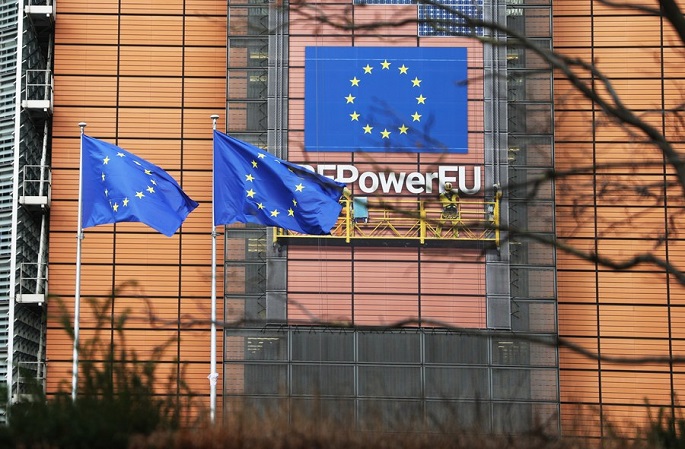Eurozone reports modest Q1 GDP growth
Published : 30 Apr 2024, 23:43
Updated : 01 May 2024, 04:19
The economy in the Eurozone saw modest growth in the first quarter of this year, although economists have cautioned against overhyping its recovery, reported Xinhua.
Both the Eurozone and European Union's (EU) economies expanded by 0.3 percent in the first quarter of 2024 compared to the previous quarter, according to data released by the European statistical office Eurostat on Tuesday.
In the fourth quarter of 2023, gross domestic product (GDP) declined by 0.1 percent in the euro area and remained stable in the EU.
Germany and France, Europe's two largest economies, experienced growth of 0.2 percent in the first quarter while Italy and Spain posted growth rates of 0.3 percent and 0.7 percent respectively.
Smaller economies such as Ireland, Latvia, Lithuania and Hungary showed significant growth in the period, with Ireland expanding by 1.1 percent and the other three countries by 0.8 percent each.
"Eurozone GDP grew by 0.3 percent in the first quarter, and that's the strongest growth since the third quarter of 2022 when the energy crisis started," said Bert Colijn, senior economist for the Eurozone at ING Bank.
However, he cautioned that the current economic recovery should not be overstated. "Unlike after the (COVID-19) pandemic, there is no vigorous rebound in the making, as the economy still suffers from weak global demand, real wages have not recovered to 2021 levels, and it is still adjusting to higher interest rates," he added.
Colijn also referred to the European Commission's Economic Sentiment Indicator, which showed that April was disappointing again, with moderate activity in the service sector and weakening manufacturing output. He noted that the Eurozone's economy appeared to be a "mixed bag" at the start of the second quarter.
Eurostat's preliminary data revealed that the annual inflation remained stable in the Eurozone in April at 2.4 percent.
Service prices, which are now the primary driver of inflation, increased by 3.7 percent year-on-year, down from 4 percent in March.
Food, alcohol, and tobacco prices rose to a yearly inflation rate of 2.8 percent in April, up from 2.6 percent the previous month. Non-energy industrial goods saw a year-on-year inflation rate of 0.9 percent this month, down from 1.1 percent in March.
Energy prices continued to decline, with annual inflation reaching negative 0.6 percent in March, an improvement from negative 1.8 percent the previous month.
"The headline number was flat because food inflation accelerated from 2.6 percent to 2.8 percent, and energy prices dropped less quickly, from negative 1.8 percent to negative 0.6 percent compared to last April," explained Colijn.
Tuesday's inflation data likely supports the European Central Bank's (ECB) decision to cut interest rates in June.
A global firm AXA Investment Managers has maintained its long-held prediction that the ECB will lower interest rates three times this year: in June, September, and December.


